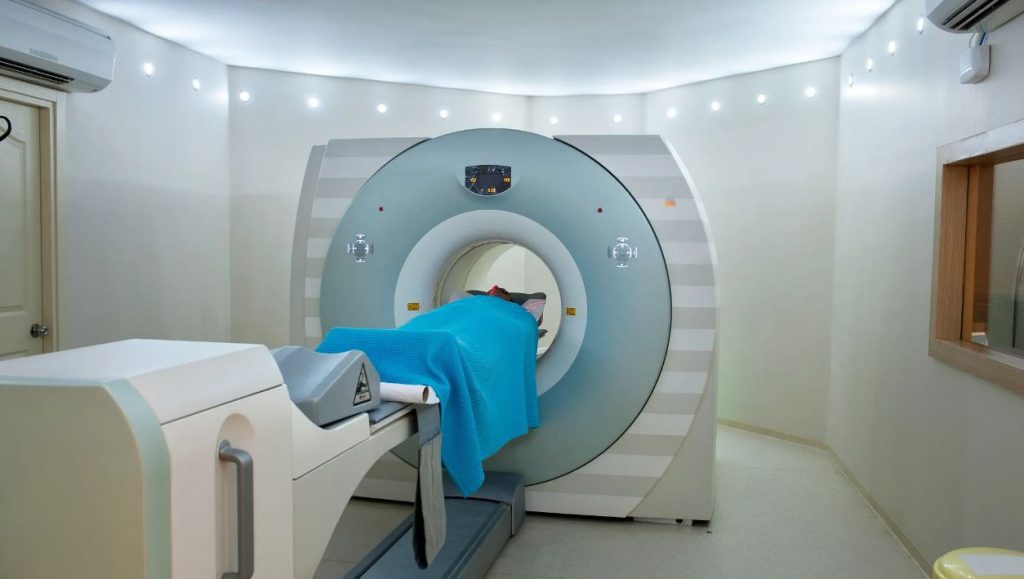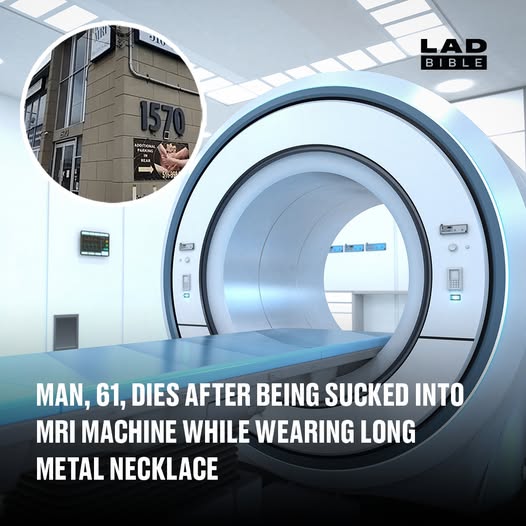A terrifying accident occurred at Nassau Open MRI in Westbury, Long Island. During a routine knee scan for his wife, Keith McAllister, 61, walked into the scanner room wearing a heavy 20‑lb metal chain. As the MRI’s magnets activated, the chain was immediately drawn toward the machine, yanking McAllister violently into the scanner. Find out more in the article below.
Wife’s Terrifying Account
McAllister’s wife, Adrienne Jones‑McAllister, was present during the incident. She described the moment in harrowing detail:
“At that instant, the machine switched him around, pulled him in, and he hit the MRI… He went limp in my arms,” she tearfully recounted. She also pleaded with staff: “Could you turn off the machine? Call 911? … Turn this damn thing off!”

Adrienne added that staff were previously aware of her husband’s bulky chain. “They had a conversation about it before: ‘Oh that’s a big chain,’” highlighting a glaring safety oversight.
Magnetic Machines: Hidden Dangers
MRI machines operate on powerful magnets that are always active—even when idle. They’re known to attract small metal items like keys or hearing aids, and large metal objects such as wheelchairs, oxygen tanks, or heavy chains can become dangerous projectiles. Medical experts strongly emphasize removing all metal items before entering MRI zones. Dr. Payal Sud from North Shore University Hospital explained, “The dangers could be catastrophic… It would act like a torpedo trying to get into the middle of the center of the magnet”.
Protocol Breached: Who Is At Fault?
According to video from News 12 Long Island, the technician allowed Mr. McAllister to enter the scanning room despite the chain—a breach of routine MRI safety protocols. However, other reports suggest McAllister might have entered without permission after hearing his wife scream. Regardless, this tragedy shines a harsh light on procedural failures—either from staff or due to the absence of physical safeguards or signage blocking unauthorized access.
Aftermath and Investigation
The Nassau County Police Department has launched a full investigation into the incident. Meanwhile, Nassau Open MRI has yet to issue a formal statement.
New York’s Department of Health is also reviewing the incident, noting that MRI facilities aren’t routinely inspected, which may have contributed to the lapse in oversight.
A Rare Yet Deadly Risk
While adverse MRI events are extremely uncommon—out of millions of scans per year, only about 300 incidents are reported—the force generated by MRI magnets is substantial and can result in severe injuries or fatalities if safety protocols are ignored. Experts urge strict zoning systems and enforcement of rules—no metal allowed—to prevent similar tragedies.

Key Safety Takeaways
- Strictly enforce MRI screening protocols—remove all metal, including jewelry and personal items.
- Maintain clear physical boundaries between waiting areas and scanning rooms to prevent unauthorized access.
- Ensure staff vigilance—technicians must deny entry to anyone with questionable items.
- Educate patients and accompanying visitors on the everyday risks of MRI equipment.
Final Thoughts
This devastating incident underscores the lethal potential of MRI magnets when safety procedures fail. Keith McAllister’s death is a tragic reminder that even everyday objects—like a metal necklace—can become deadly in medical environments without rigorous oversight.

















